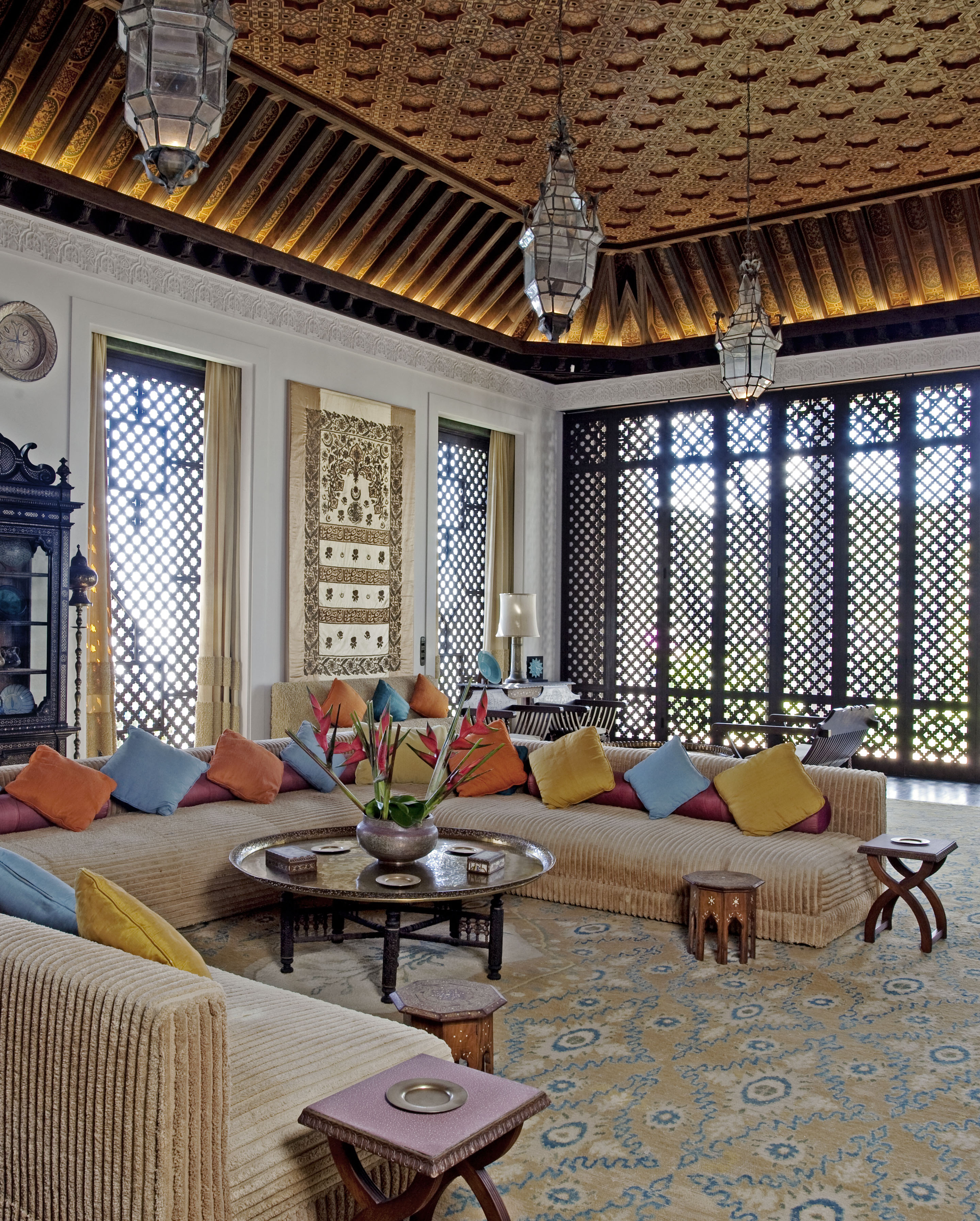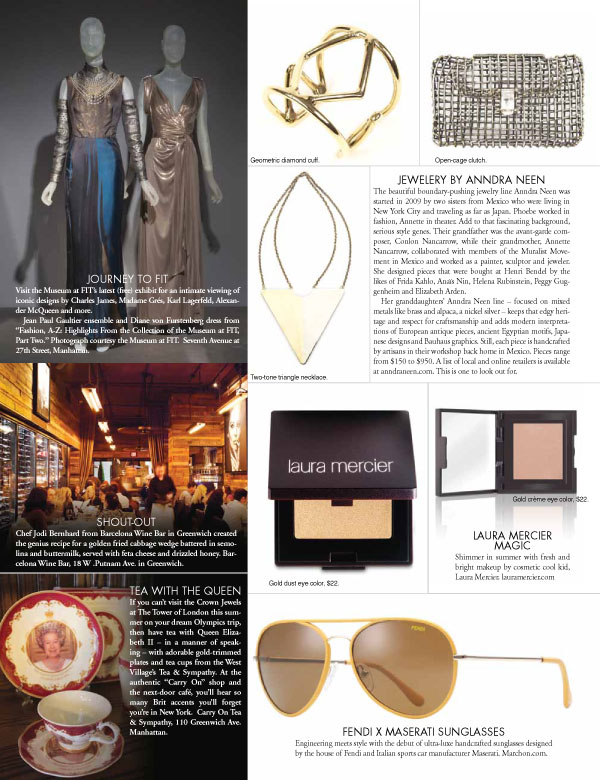On the centenary of her birth, Doris Duke is having yet another moment in the spotlight.
And this time, it’s an extended one thanks to a renewed interest in Shangri La, her fabled Hawaiian retreat.
The five-acre estate – a celebration of Duke’s ahead-of-her-time interest, exploration and appreciation of Islamic art – is a dazzler, to be sure.
The late American heiress and philanthropist had a life (1912-1993) that often played out in public. The daughter of tobacco titan James Buchanan Duke was long known as “the richest girl in the world,” her every move followed by newspapers around the globe.
Her wealth would enable her to travel extensively in pursuit of varied interests, from art to surfing, historic preservation to, in later years, AIDS awareness.
It was on her extended honeymoon with first husband James H.R. Cromwell in 1935 that Duke cultivated an interest in Islamic art that would lead to the construction of Shangri La, which would become an integral part of her legacy.
With “Doris Duke’s Shangri La: Architecture, Landscape and Islamic Art,” (Skira Rizzoli) a traveling exhibition that continues through Feb. 17 at the Museum of Arts and Design (MAD) in Manhattan, a new generation has the chance to savor Duke’s unique eye.
The exhibition’s accompanying book – “Doris Duke’s Shangri La: A House in Paradise,” edited by Thomas Mellins and Donald Albrecht – is a vibrant reference ideal for holiday giving or as a splurge that transports you into a world of artful design.
In person, in print
The Duke exhibition at MAD is a gem, to be sure.
Guest curators Albrecht and Mellins, in collaboration with the Doris Duke Foundation for Islamic Art, have crafted a well-rounded look at Duke, her travels and how they affected her daring designs.
It’s a treasure trove highlighted by large-scale, newly commissioned photographs by Tim Street-Porter that bring Shangri La to life.
One can’t help but keep staring into the dramatically backlit image of the living room. As light streams in through the intricately carved panels, it’s easy to imagine simply sprawling in the exquisite sanctuary. You want to settle into the oversize couch surrounded by colorful pillows beneath evocative glass lanterns and daydream an afternoon away.
The exhibition is filled with such immediate works, objects and vignettes that clearly convey a mood.
There are floor plans, construction photographs, a scale model and even a film of Duke touring the site as work is under way. Shangri La’s sensibility is further experienced through ceramic pieces and tile panels, delicate rosewater decanters and Syrian wooden chests, carved screens and patterned rugs. Then there are the most personal touches, from Duke’s enamel-and-gem bracelets to a printed cotton dress.
And a scrapbook of the honeymoon that ignited it all shows not only the varied places she and Cromwell visited – there are hotel receipts and opera tickets as well as cards from antiques shops and jewelry boutiques from Manila to Jaipur, Hong Kong to Cannes – but also gives a glimpse into the romance of the trip.
A hand-written receipt allows you to envision the newlyweds at the counter of a confectionary shop in
Darjeeling where they selected treats, including a half-pound of chocolates, two crumpets and two rolls.
In addition, the exhibition includes works by six contemporary artists of Islamic heritage who have participated in Shangri La’s Contemporary Artists Residency program.
After savoring the exhibition, stop by The Store at MAD (a treat in itself) and pick up the accompanying book.
This is no modest production but rather a 232-page, hardcover edition filled with 300 photographs. It is page after page through Shangri La’s terraced gardens and pools that overlook the Pacific Ocean at Honolulu’s Diamond Head, a tour that explores most every detail of the celebrated estate, from expansive shots of the dining room complete with an elaborate chandelier to the most detailed depictions of features such as the stenciled ceiling and column on the Playhouse lanai.
Enduring appeal
Clearly, the Duke legacy and its effect on home design, art and style continue.
Recently, Manitoga/The Russel Wright Design Center in Garrison offered a Manhattan lecture by MAD exhibition curators Mellins and Albrecht devoted to “Doris Duke’s Shangri La.” (Albrecht was a curator of the 2001 retrospective on Russel Wright, the industrial designer, at the Smithsonian Cooper-Hewitt, National Design Museum in Manhattan.)
Lori Moss, assistant director of Manitoga – Wright’s home, studio and gardens – said the evening was designed to show the link between Wright and Duke.
“With (Albrecht’s) unique perspective, Donald brought to light the connection between two mid-20th century legends,” Moss says, adding that the evening showed that though different in mood and texture, Wright’s Manitoga and Doris Duke’s Shangri La indeed had common threads.
She further notes that Manitoga was pleased to present the lecture “in celebration of the experimental spirit and international flair that find unique expression at Manitoga and Shangri La.”
“Doris Duke’s Shangri La: Architecture, Landscape and Islamic Art” continues through Feb. 17 at the Museum of Arts and Design, Jerome and Simona Chazen Building, 2 Columbus Circle, Manhattan. Visit madmuseum.org. “Doris Duke’s Shangri La: A House in Paradise” (Skira Rizzoli, $55), edited by Thomas Mellins and Donald Albrecht, is available at The Store at MAD, the lobby-level museum shop, and at your local booksellers.



